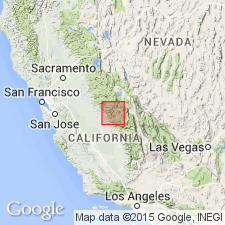
- Usage in publication:
-
- Calico formation
- Modifications:
-
- Original reference
- Dominant lithology:
-
- Volcanics
- AAPG geologic province:
-
- Mojave basin
Summary:
Pg. 85. Calico formation. Pumice deposits northwest of Barstow occur in a thick series of volcanic rocks of Calico (Miocene) formation. The volcanic rocks consist mostly of tuffs and rhyolite flows; strike northwest and dip moderately to the southwest. Thickness about 270 feet (at Williams Brothers quarry).
Typical section exposed on steep hillside a few hundred feet east of Williams Brothers pumice quarry, 18 mi northeast of Barstow, San Bernardino Co., southern CA. Name credited to T.W. Dibblee, Jr. (unpub. map).
Source: US geologic names lexicon (USGS Bull. 1200, p. 581).
For more information, please contact Nancy Stamm, Geologic Names Committee Secretary.
Asterisk (*) indicates published by U.S. Geological Survey authors.
"No current usage" (†) implies that a name has been abandoned or has fallen into disuse. Former usage and, if known, replacement name given in parentheses ( ).
Slash (/) indicates name conflicts with nomenclatural guidelines (CSN, 1933; ACSN, 1961, 1970; NACSN, 1983, 2005, 2021). May be explained within brackets ([ ]).

